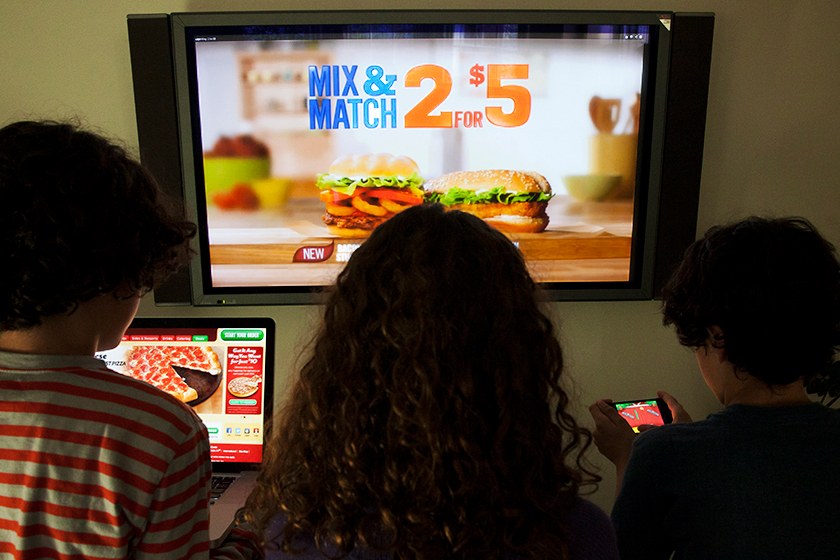Television ads for primarily unhealthy foods and beverages represented more than 75 percent of food-related ads viewed last year by youth, despite a downward trend in food-related ads viewed by children and adolescents, according to a new report from the UConn Rudd Center for Food Policy and Obesity.
In 2016, fast food was the most advertised category to individuals in all age groups, representing 26 percent of food-related ads viewed by children (ages 2-11) and 31 percent by adolescents (ages 12-17). From 2015 to 2016, children were exposed to 19 percent more ads for carbonated beverages and 38 percent more ads for juice, fruit drinks, and sports drinks.
These are among key findings in a 2016 report issued today by the UConn Rudd Center. The report – ‘Trends in Television Food Advertising to Young People: 2016 Update’ – documents trends in food-related TV advertising (i.e., ads for food, beverages, and restaurants) viewed by children and adolescents from 2002 to 2016, focusing on changes from 2015 to 2016. It also examines changes in categories of food and beverages advertised since the Children’s Food & Beverage Advertising Initiative self-regulatory program was implemented in 2007 to “shift the mix of advertising primarily directed at children.”
The report shows that children and adolescents viewed fewer food-related TV ads in 2016 than in 2015, continuing the downward trend that began in 2013 for children and 2012 for adolescents. From 2015 to 2016, food, beverage, and restaurant advertising to children decreased by 4 percent, and decreased by 9 percent to adolescents. Compared to 2007 – the year the Children’s Food & Beverage Advertising Initiative self-regulatory program was implemented by industry – children saw 7 percent fewer ads and adolescents saw 10 percent fewer.
The report concludes that there has been some notable progress since 2007 in the amount and types of food-related TV advertising viewed by children and adolescents. “On the other hand,” the report notes, “children’s exposure to TV ads for some primarily unhealthy categories, including candy, beverages (excluding water), and fast food restaurants, increased from 2007 to 2016 … While some progress has been made to improve the amount and types of food-related TV ads viewed by children and adolescents, there is still considerable room for improvement.”



